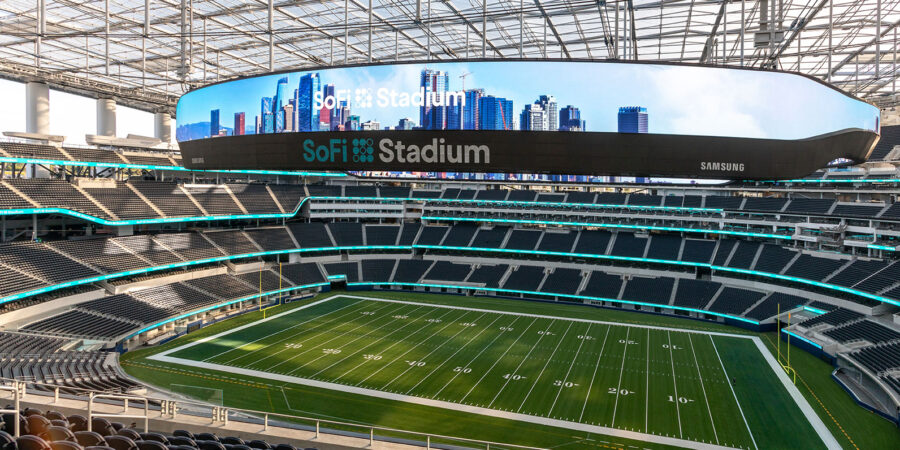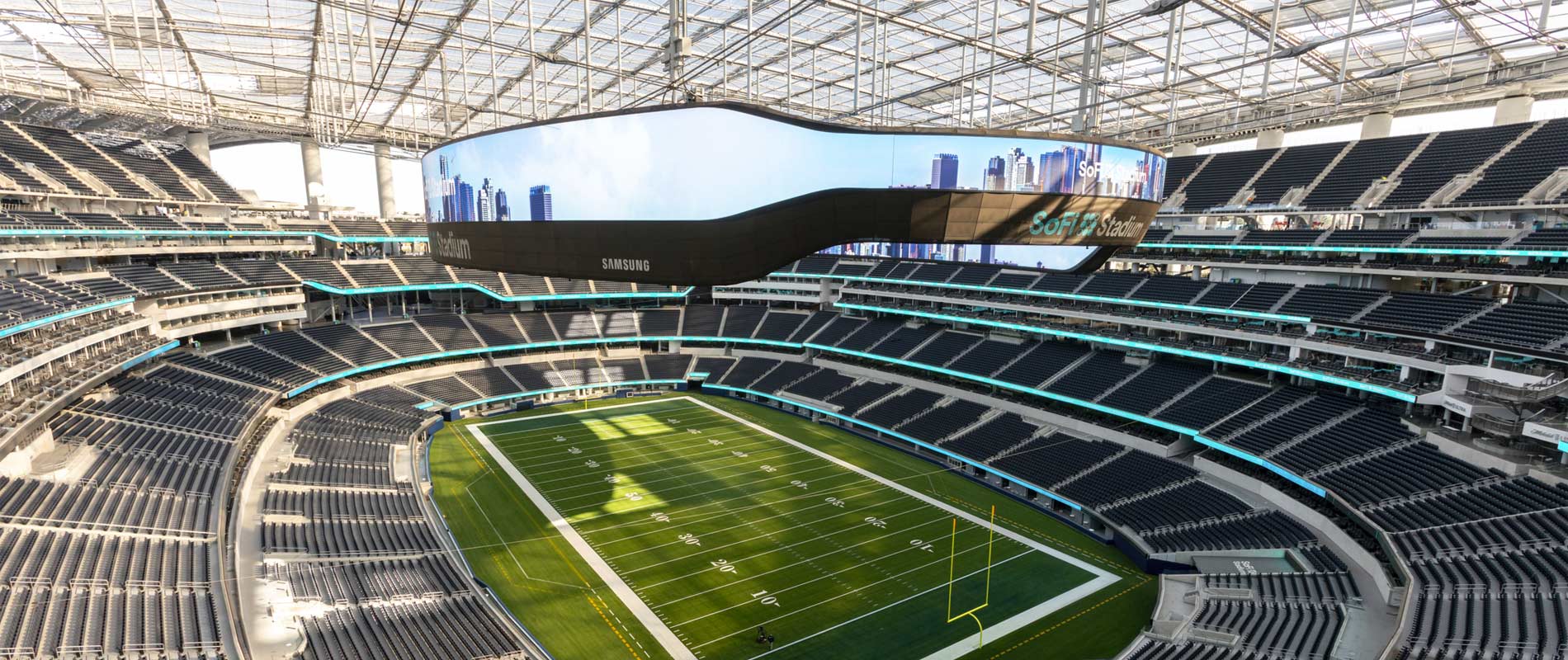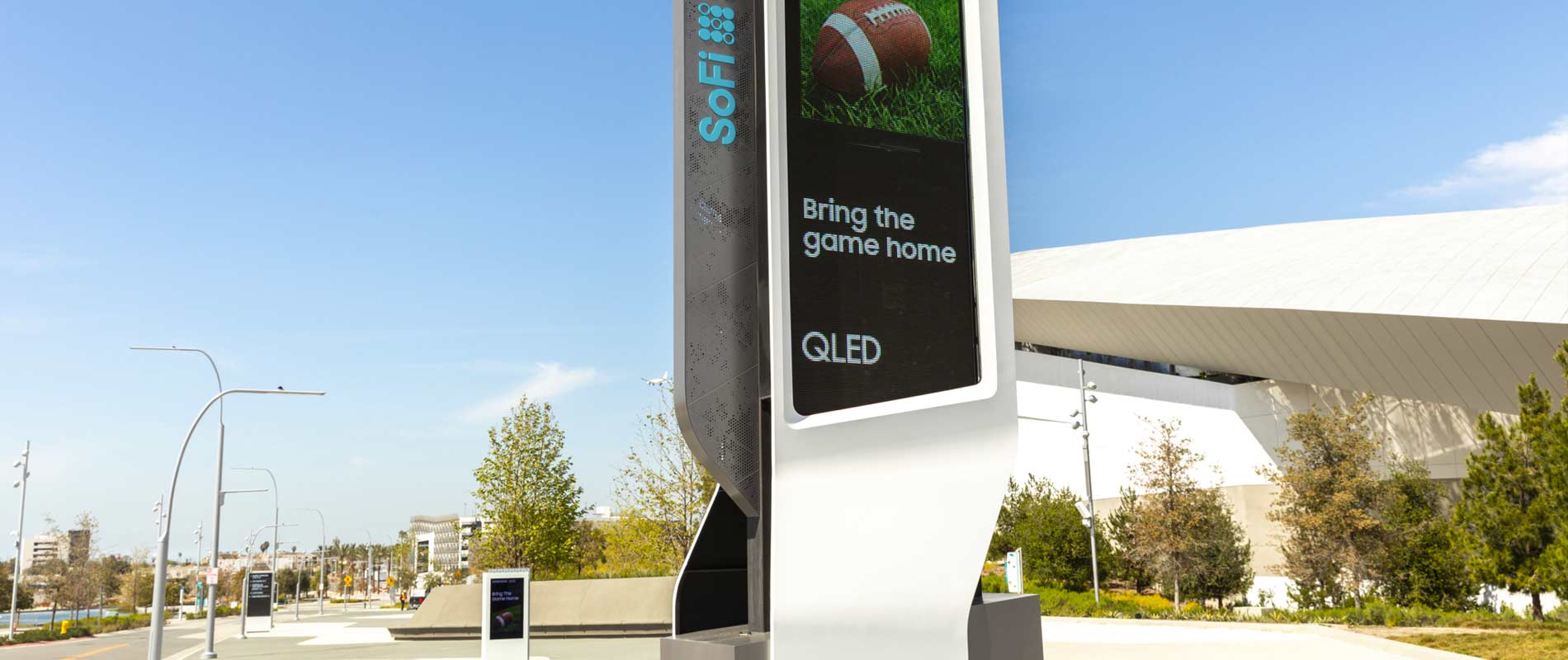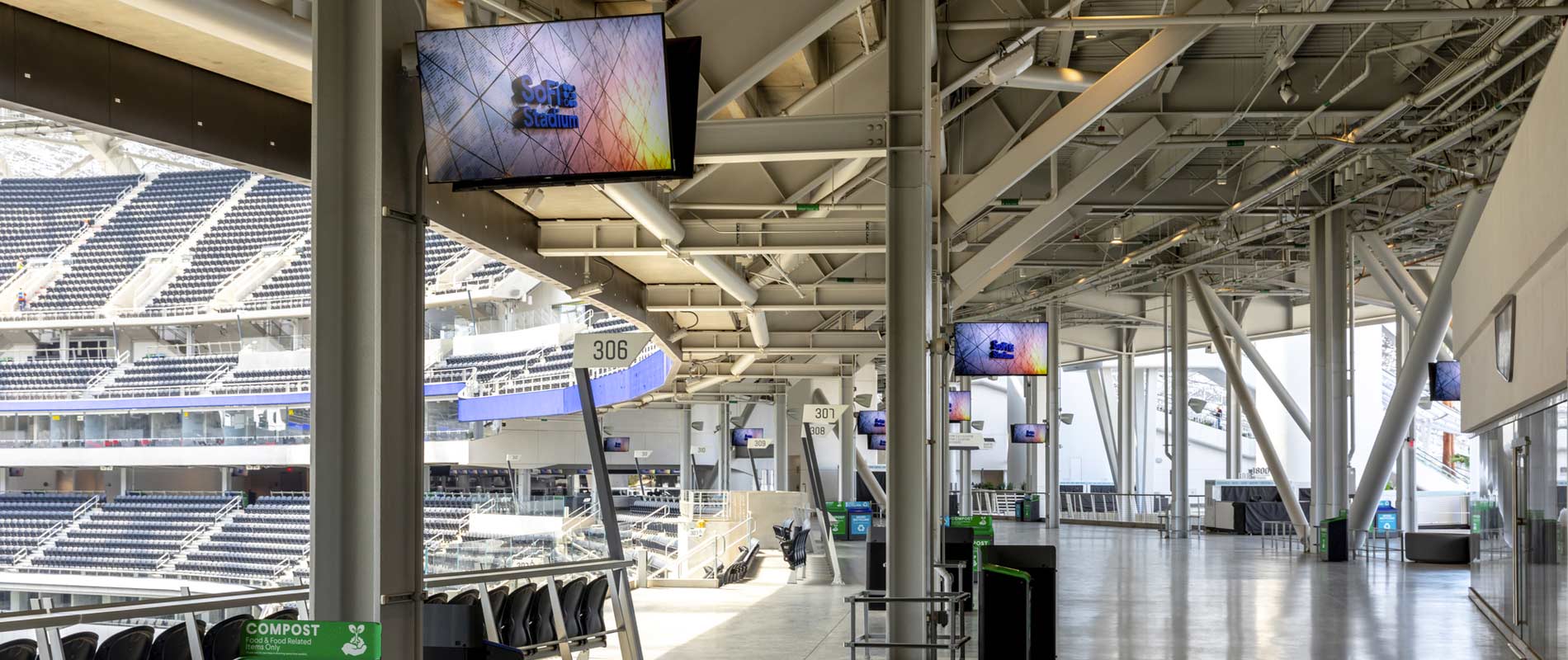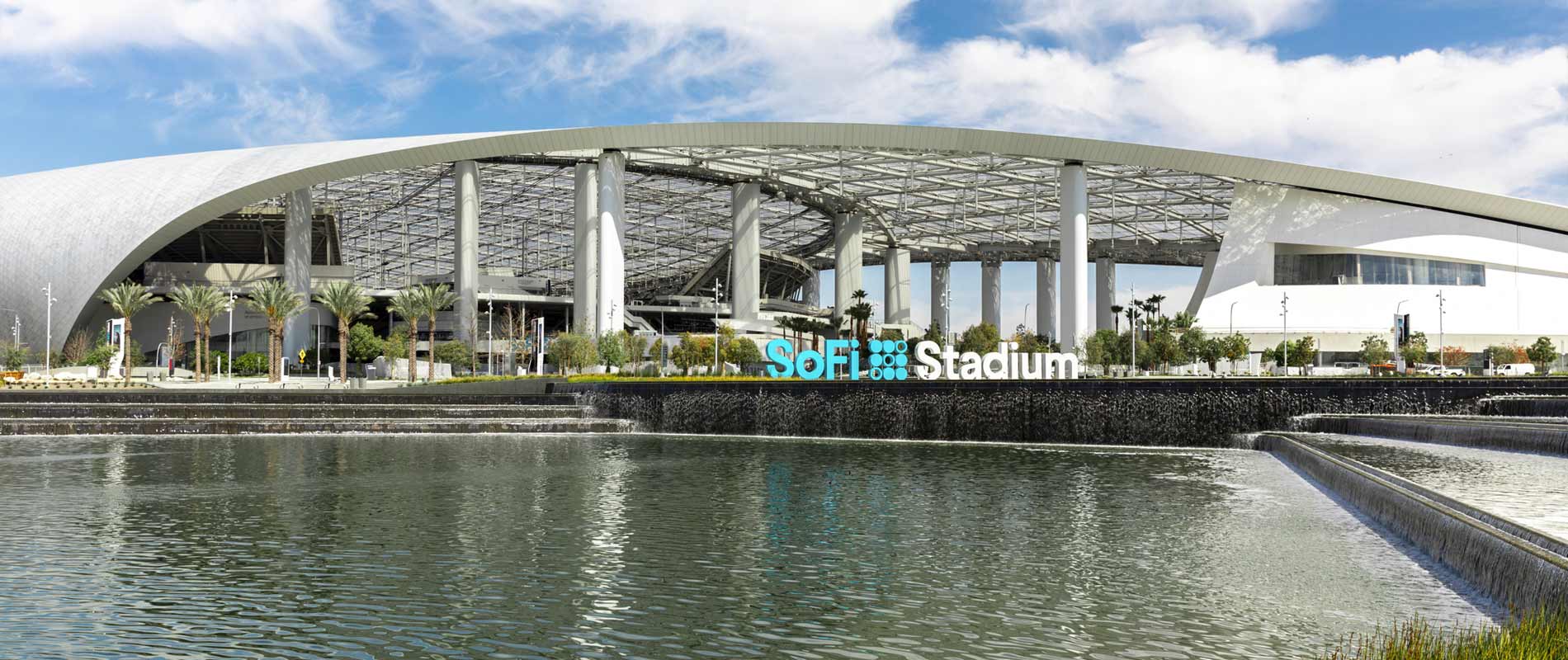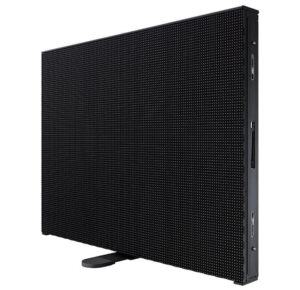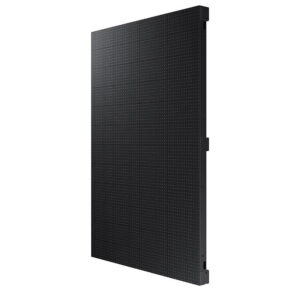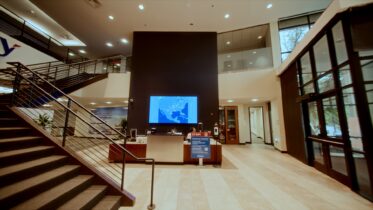

The Challenge
Los Angeles Rams Owner/Chairman and SoFi Stadium and Hollywood Park Developer E. Stanley Kroenke had a vision to create a global sports and entertainment destination in the heart of Los Angeles. The need was to reimagine what a stadium and events destination should look like in the 21st century, focusing on the fan experience and how technology could deliver it.
The Solution
Samsung’s commitment to the project’s vision, and their ability to deliver a wide spectrum of audiovisual technology, made the company the de facto choice for the project.
The Infinity Screen by Samsung, the largest video board ever created in sports, features groundbreaking technology that reimagines the fan experience. The design and engineering team at Samsung, along with a leading content and control solutions provider, helped expand the stadium plans, working alongside the project’s stakeholders to deliver the spectacular, double-sided and center-hung LED display that’s key to the stadium’s impact.
Samsung’s own catalog of large format displays and audio equipment was also vital for delivering the sound and Internet Protocol Television (IPTV) systems installed throughout the stadium.
"It's absolutely revolutionary. And now, we can't wait to share it with fans." — Skarpi Hedinsson, CTO of SoFi Stadium and Hollywood Park
The Results
The end-to-end integration of technology has created a buzz around the stadium and piqued the interest of the public, the press and design teams around the world.
As fans excitedly anticipate attending events at SoFi Stadium and Hollywood Park, activity at the stadium is growing as employees prepare the venue for more games, concerts and events in the coming year.

About SoFi Stadium
SoFi Stadium is an unprecedented and unparalleled sports and entertainment destination built in Inglewood, California, by Los Angeles Rams Owner/Chairman E. Stanley Kroenke. The first indoor-outdoor stadium to be constructed, SoFi Stadium is the home of the Los Angeles Chargers and the Los Angeles Rams.
The state-of-the-art stadium reimagines the fan experience and will host a variety of events year-round — including Super Bowl LVI in 2022, the College Football Playoff in 2023 and the opening and closing ceremonies of the Olympic Games in 2028.
Located on the site of the former Hollywood Park racetrack, the stadium is the centerpiece of a 300-acre mixed-use development, which will feature retail stores, commercial offices, a hotel, residential units and outdoor parks.
The Challenge
Creating a live events destination for the 21st century
Starting with a blank page, Kroenke’s vision for a new sports and entertainment venue in L.A. was to create an unparalleled destination in the world of live events. At the center of it all was the question of creating a unique fan experience: How could each seat in the stadium be immersed in the action?
Under the leadership of SoFi Stadium and Hollywood Park’s CTO, Skarpi Hedinsson, a team of designers, engineers, architects and visionaries was brought together to pair cutting-edge technology with architectural ingenuity.
“It was an opportunity to bring to Los Angeles, the entertainment capital of the world, the most innovative technology available,” says Hedinsson, “to create the most interactive and exciting guest experience anywhere, all designed in from the very first steps.”
The vision of the Infinity Screen, a 360°, 70,000 square foot, dual-sided and center-hung video board was revolutionary from the beginning. Hedinsson had to ensure that everyone involved knew that the board’s size and shape were fundamental to the design. “It was an incredible collaborative effort, taking in sight lines, engineering challenges and weight-bearing issues on the roof,” he explains. During the stadium’s design and construction process, every aspect incorporated the fundamental element of the board’s impressive size.
“The first draft that came out, they thought it couldn’t be constructed because the circumference was bigger than the field itself,” Hedinsson recalls. “That challenge was met with creativity, collaboration and innovation unlike any other build in the world.”
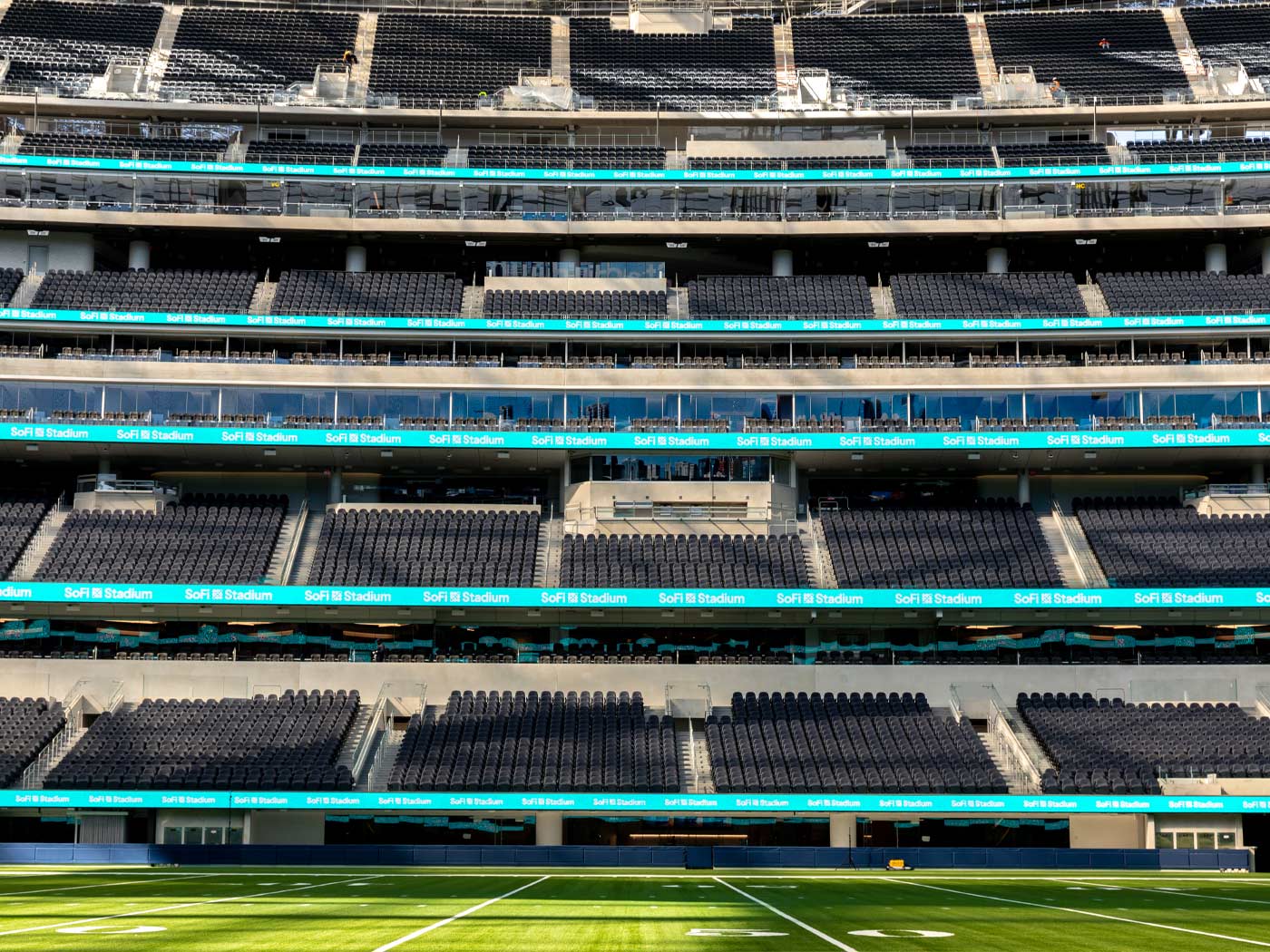
The Solution
Partnership that delivers more than hardware
Samsung was selected from a shortlist of vendors based on the company’s diverse range of products and skill sets. Hedinsson explains that “Samsung, as a multinational company with a portfolio including displays, audio systems and engineering experience,” gave clients confidence in the products provided and the relationship’s durability. Hedinsson adds, “Nobody, not even Samsung, had the experience of building something like this before.”
Brett Unzicker, vice president of sales for Samsung B2B Display, explains, “From the initial concept review in 2016 to the contract stage in 2017, Samsung was excited by the scale and challenge of the project.”
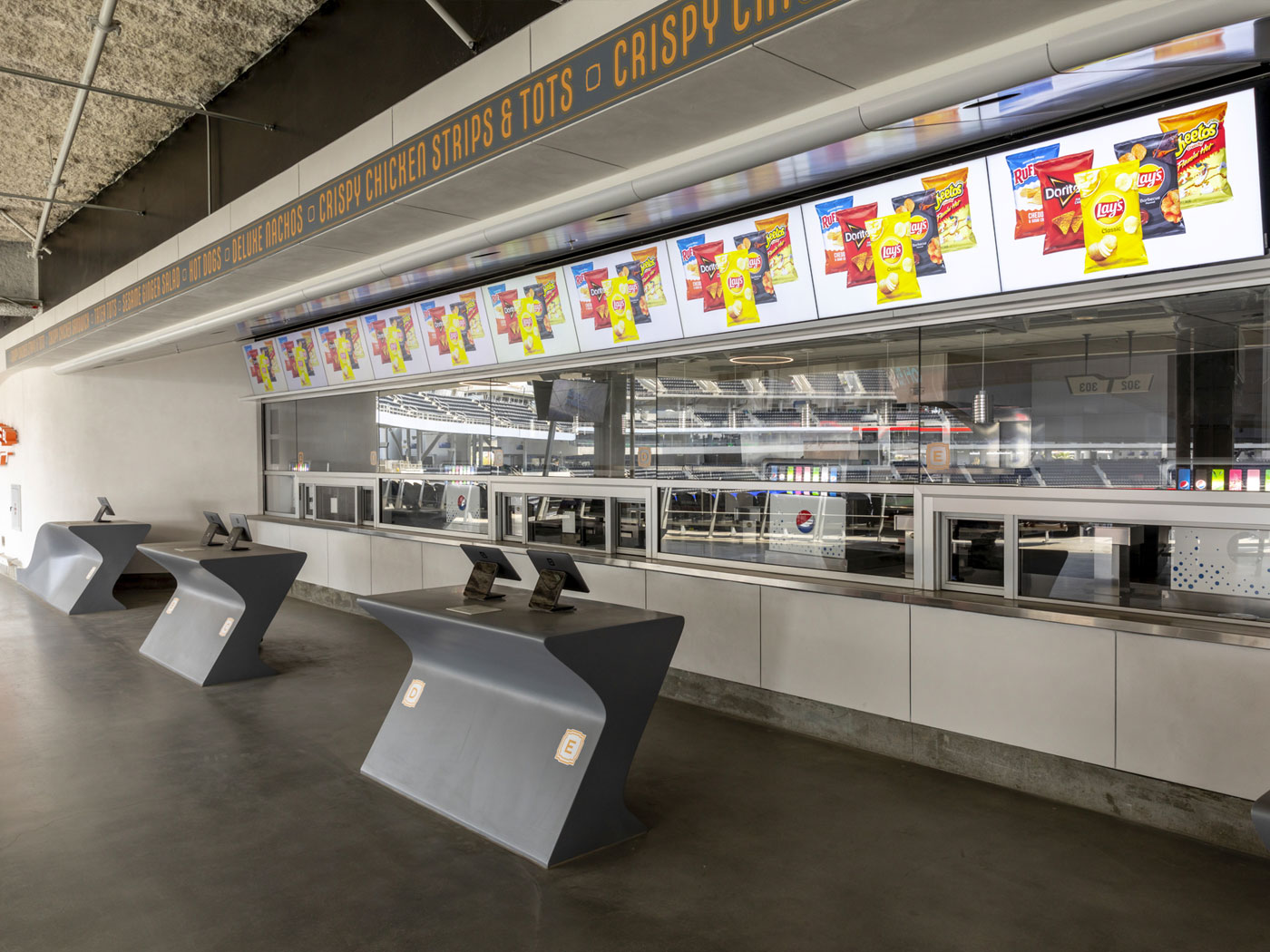
In the development of the Infinity Screen, Samsung proactively recommended the upgrade from a 16mm pixel pitch — the original plan — to an 8mm pixel pitch, which would improve the fan experience from every seat in the house.
“It took more than a year for the diode manufacturer to produce the single batch of almost 80 million diodes used in the video board display,” says Unzicker.
Samsung also proactively delivered other solutions for the venue, including more than 2,600 large format displays, ribbon boards (long, thin LED screens mounted on the face of balconies) and audio equipment, as well as partner companies that provided the control suite.
“A project like this involves two equally important aspects,” Hedinsson explains: “the hardware — including the sound and power management in addition to the screens themselves — and the software for how the screens and content are managed.”
“SoFi Stadium’s partners for control and content management helped streamline the ongoing development of the game day experience and fan engagement,” says Jason Cothern, SoFi Stadium and Hollywood Park’s vice president of broadcast operations. “We’ve built a very good relationship, unique because we all went through this learning experience together,” says Cothern.
The Installation
Building a technological wonder takes teamwork
Hedinsson describes the deployment of the Infinity Screen as a fascinating process. “The roof itself is a cable net system using a compression ring,” he explains. “We had to finalize the shape and weight before the structural engineering could be signed off, as the roof had to be designed to take the weight.”
The Samsung team needed to work with all of the construction trades to deliver the unique display. The Infinity Screen installation started in August 2019, and according to Unzicker, they worked closely with their own contractors, and the stadium’s, to build the display on the ground.
They first built the roof, and then the display was added to the structure. “The whole thing wasn’t complete until the weight of the Infinity Screen was added,” says Hedinsson. “The interplay between the roof and the video board weighing 1,000 metric tons” made it a single integrated structure.
The Infinity Screen was designed to be installed over the course of two weeks, raised 0.75 inches at a time. But when the team saw that the process was working as designed, they accelerated the final lift, putting it in place in just two days.
At completion in August 2020, the Infinity Screen’s final position needed to be within a tolerance (a specific position and margin of error) of no more than 0.25 inches.
The Activation
VR plays a key role in completing the engineering feat
To create a new standard for fan experience, the SoFi Stadium team needed to create a cohesive plan for using their new digital hardware. “On game day, we run one of the most sophisticated live production facilities in the world,” says Hedinsson, “for the sole purpose of presenting content on the Infinity Screen and all of the screens throughout the facility.”
Cothern joined the project in September 2019 and immediately had two key pathways to manage. First, he had to define which sponsorship assets would work to fulfill the needs of the teams and the venue. Secondly, he had to bring all the stakeholders together to translate what that would look like on the displays.
As an integral part of the design and build process, Cothern’s team created a 3D virtual reality (VR) environment to map the Infinity Screen and the stadium, which Unzicker says made the project a success. Thanks to the VR map, everyone involved in the display project can see exactly what fans would see from every seat in the bowl.
The VR toolset for visualization proved invaluable in the design and delivery of the display, agreed Cothern and Hedinsson, and this tool set remains useful for creating game day content.
“We brought two teams together, the Rams and the Chargers, and started a weekly think tank. This was all new,” says Cothern. “We were hoping to create a wireframe that worked for everyone, but eventually, after discussions with the teams and Skarpi, we decided to create two different shows. We created one for each team so fans who went to one team’s game could then go experience a totally different show at another game or event.”
“We’re already seeing the applications for the system are growing,” Cothern adds, “and how we use it will continue to develop. We’re being challenged all the time to create fresh content for the displays, and the shows we produce will certainly evolve with time.”
The Operation
Preparing for game day
SoFi Stadium’s equipment resources could fill an almanac of digital technology. In addition to the central, double-sided 8mm pixel pitch video board named the Infinity Screen, the facility features 16mm LED ribbon boards on five levels, LED wayfinding displays and incredible indoor LED feature walls. In total, there are more than 131 million pixels — comprising nearly 98,000 square feet of LED.
More than 2,600 Samsung large format displays comprise the IPTV system, including menu boards for food and beverage services, as well as 4K show displays that will keep fans engaged all around Hollywood Park. And these displays are managed alongside the LED “out-of-house” displays, strategically placed throughout the Hollywood Park campus that surrounds the stadium.
Planning a game day package begins several days — even weeks — beforehand. The sponsors, the teams and the stadium’s in-house staff are all committed to producing the best-quality show for every game.
“It takes a large group of people to get these projects done,” explains Cothern. “It helps to have great relationships with all the staff, including Skarpi Hedinsson and Calvin Spencer, the director of broadcast and technical facilities. We deliver a full-scale production for every event.”
The game day broadcast from the in-house teams includes telestration and paint packages for game analysis, plus the ability to deliver branded messaging, social media, out-of-town scores and sponsorship messages to the fans. Every minute the fans are in Hollywood Park, they feel like they’re part of the event.
The Technology
VR100R
Samsung’s P10 LED Signage stadium solutions are safe and durable, with a soft rubber top-cushion and rubber louver lining to protect players and the LED diodes from impact. Outstanding picture quality results in clear images in any weather conditions, day or night.
IF085H-DL
High brightness of up to 3400 nits and low-reflection technology in the Samsung’s IF-DL Series displays create brilliant visuals that increase fan engagement.
The above featured products are only a couple of the many Samsung products located in SoFi Stadium.
The Results
The 'star attraction'
SoFi Stadium and Hollywood Park is a fantastic destination, and the Infinity Screen is a “star attraction,” says Hedinsson. “[Cothern] and his team are swamped with requests to use it, and we’re all looking forward to using it for concerts and events.”
The SoFi Stadium team, Samsung and all their partners have built something extraordinary, says Hedinsson. “It’s absolutely revolutionary. And now, having seen it ourselves for 20 games, we can’t wait to share it with fans.”
